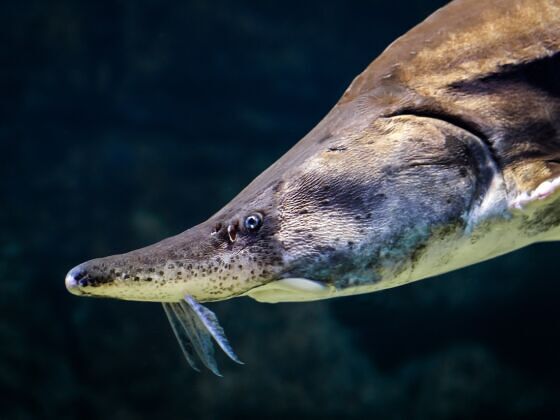The United States, being a very large country, is home to a wide range of ecosystems, some of which are unique to not only the country but the entire world as well. Most people expect this of California due to how it stretches across multiple latitudes, and Hawaii for being tropical, but the great state of Alabama also ranks high on the list for most biodiverse states, making it an excellent destination for wildlife tourism.


5 Beautiful Species You Can Only Find in Alabama and How to Help Them Thrive
Alabama is fifth when it comes to biodiversity in the US, and number one when it comes to crayfish, freshwater turtles, freshwater snails, and freshwater mussels. In fact, the 180 freshwater mussels species found in Alabama make up 60% of the nation’s total mussel population. Though this article focuses on fauna, it’s worth noting that Alabama is also the most biodiverse state when is comes to carnivorous plants.
There are 14 river basins in the state, supporting 132,000 miles of rivers and streams, making varied marine ecosystems prominent in the Alabamian environment. This explains the high rate of unique freshwater creatures, as well as said creatures’ vulnerability to change.
Check out some of the creatures unique to Alabama, and learn how to help them keep Alabama biodiverse.
Vermilion Darter
Kicking off the list is a fish, the Vermilion Darter, which is only found in Alabama’s Jefferson County. It’s federally listed as endangered, as the multi-colored little fish occupies only a small part of a tributary, making its available habitat extremely confined. Though it grows barely larger than 2 inches, it is worth protecting.
The US Fish and Wildlife Service designated 13 miles of watershed in which the fish can thrive. Supporting the continued existence of the vermilion darter is crucial for this part of Alabama, and for all the other flora and fauna that are affected by the species survival. Clean water and habitat maintenance will make the difference for the darter, so keeping development out will help keep this fish in.
Alabama heelsplitter
There’s no wondering how this freshwater mussel got its name! Freshwater mussels like the heelsplitter love to call Alabama home, and the people of the state are lucky to have them. Not only do the bivalved mollusks filter the water of algae, bacteria, and more, they act as indicators of environmental change and water quality. They also serve a commercial purpose: their shells were once the reasons that pearl buttons existed, and today mussels continue to be harvested for their shells, which are used to start pearls in oysters.
Even if heelsplitters and their cousins are no fun to walk on, they’re an essential part of Alabama’s native ecosystem and are beyond worthy of protection. Three fourths of the mussels endemic to Alabama are already extinct. Habitat loss poses the greatest risk to mussels, as does overfishing. Both can be curbed by supporting the foundation of national lands, and making mussel-conscious decisions when buying pearl products.
Alabama Beach Mouse
Alabama isn’t just rivers and streams, it also occupies a stretch of the Gulf Coast. That’s where visitors will find the Alabama Beach Mouse, one of the few mammal species endemic to the state. The endangered rodent used to be found all along Alabama’s coastline, but housing developments, predation by domestic cats, and hurricanes have dwindled their range.
They provide an essential role in the beach ecosystem: distributing seeds that will eventually grow into the plants that stabilize the dunes. As a prey species they also help feed native owls and snakes. The building of houses in the beach mouse’s habitat has been halted in the past, so to protect this species similar action must be taken. Supporting the environmental organizations that lead these initiatives is crucial for the future of this species.
Red Hills Salamander
The official state amphibian of Alabama is their very own Red Hills Salamander, which grows to an impressive 10 inches in length. The endangered creature lives in the Southern part of the state, largely in areas where hardwood is present. The felling of hardwood has negatively affected the species’ ability to thrive, because like most endemic creatures they are sensitive to environmental changes.
Plus, the Red Hills salamander is slow to reproduce, and with only 63,000 acres of habitat left, mating opportunities are more scarce than ever. About 60% of that land belongs to paper companies which use it for timber, too. Fortunately in 2010 The Nature Conservancy purchased 1,786 acres of land in an effort to provide habitat for the species. Supporting them and their initiatives will certainly keep this unique creature from extinction.
Alabama Sturgeon
The extreme aquatic biodiversity in Alabama has its downsides: the Alabama sturgeon was unable to be formally identified until 1991 as a result of species density. By this point the 30-inch, yellow-orange fish was already critically endangered, a status is has retained to this day. Attempts to protect the species in the mid-90s were combatted by industrial interests, which wanted to continue using Alabama’s rivers as their toxic dumping grounds.
In 2000 the Alabama sturgeon was granted protection, and in 2008 the US Fish and Wildlife Service proposed protecting over 300 miles of river in an effort to save the fish, a specimen of which was last seen in 2009. Earlier captive breeding programs were unsuccessful after only males were found in the wild, but conservationists remain determined in their effort to revive this unique species.